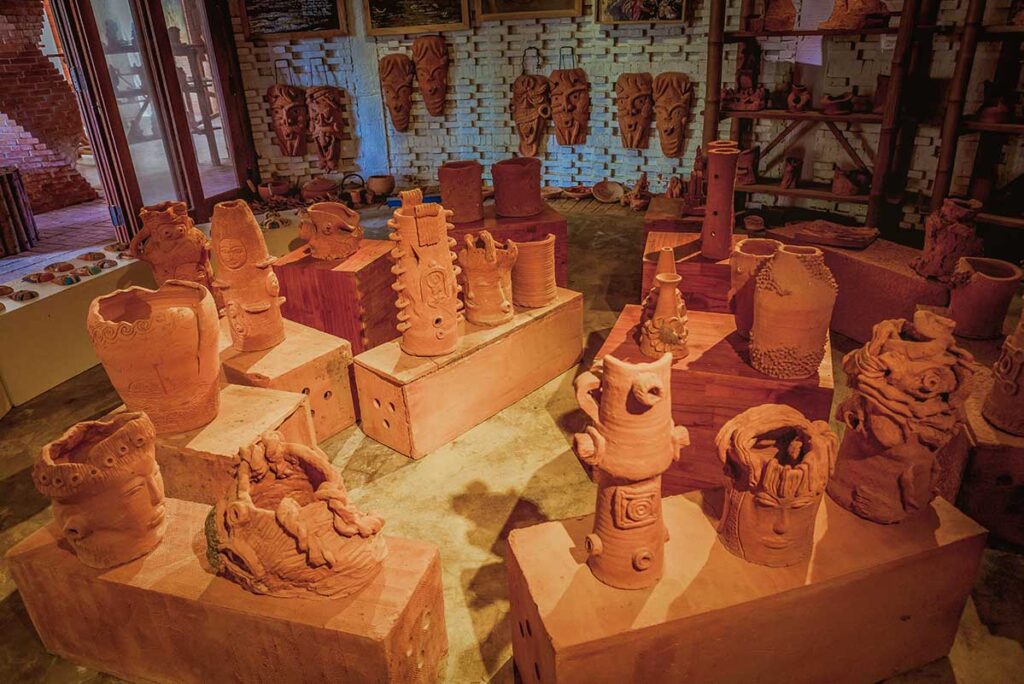History of Thanh Ha Pottery Village
Thanh Ha Pottery Village dates back to the 16th century, when skilled artisans from Thanh Hoa Province settled along the Thu Bon River and began crafting ceramics by hand. As Hoi An developed into a major international trading port, the village played a key role by supplying bricks, tiles, and everyday pottery used in homes, temples, and markets across the region.
Thanh Ha’s ceramics were not only vital for local use but also exported to countries like Japan, China, and Spain, highlighting the village’s importance in Vietnam’s historical trade networks. In recognition of its cultural and historical value, the village was officially designated a national intangible cultural heritage site in 2019.
What to see and do
1. Explore traditional workshops
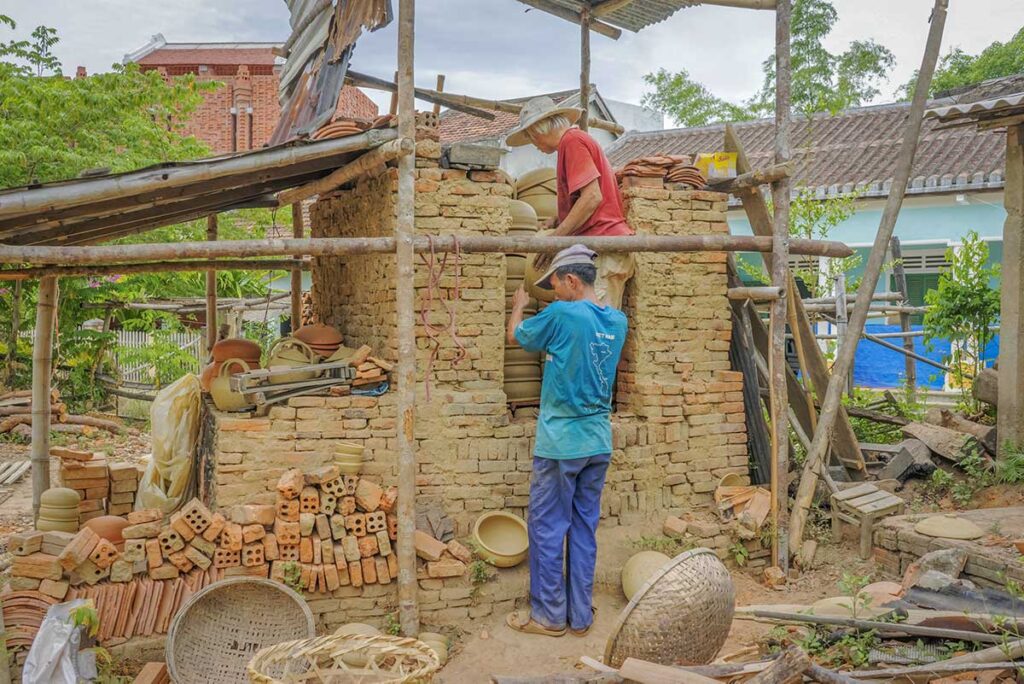

As you walk through the village’s narrow lanes, you’ll see potters shaping clay on foot-powered wheels—often barefoot and working in open-air courtyards.

Many homes double as small workshops, where generations of artisans have practiced the same techniques for centuries. You’re welcome to observe the process up close and speak with friendly craftsmen (many speak basic English or use gestures to explain their work).
2. Try pottery-making
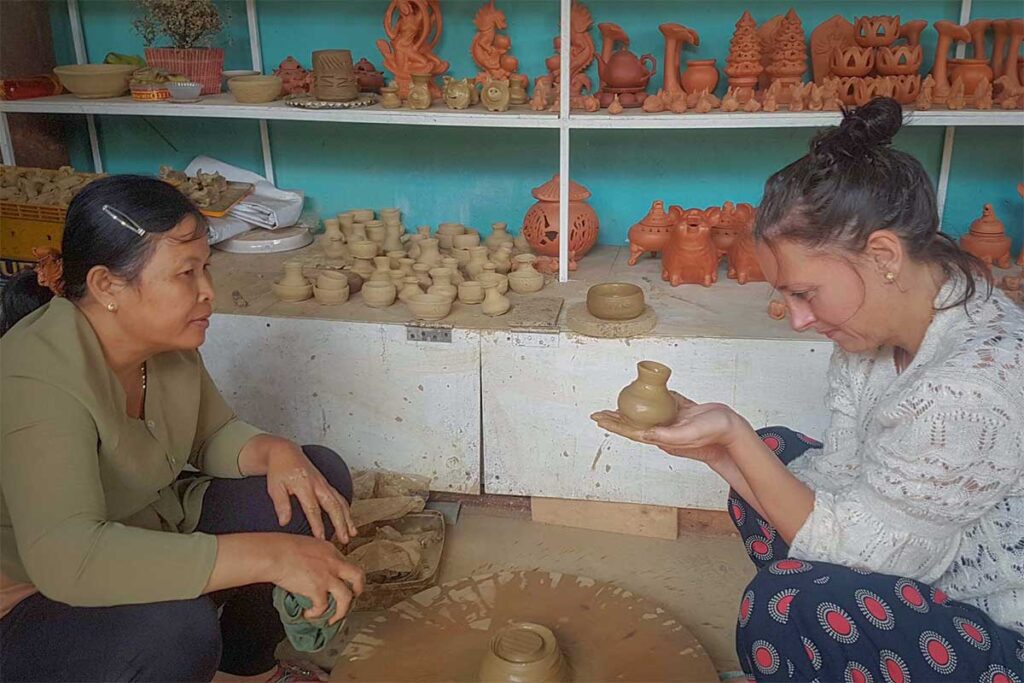
Most workshops offer hands-on experiences where you can try making your own pot or figurine. Prices usually range from 40,000–80,000 VND, depending on the complexity and whether you want to take your creation home.
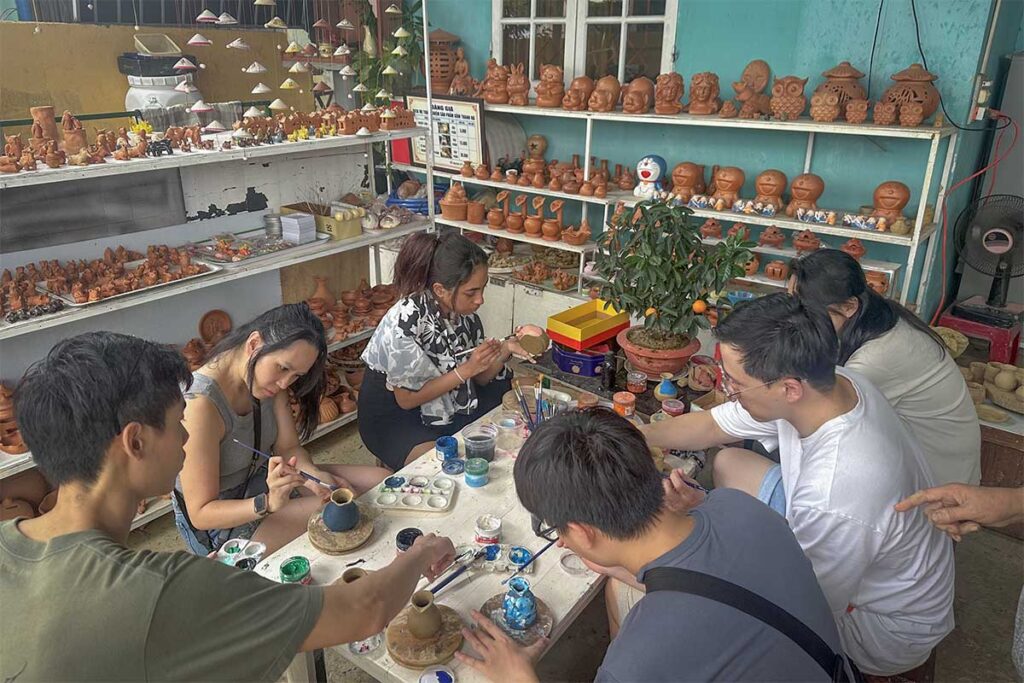
Some include a basic clay whistle as a free souvenir. While the pottery isn’t fired in a kiln (some use air-dry or heat-gun methods), it’s still a fun and interactive way to understand the craft.
3. Visit Thanh Ha Terracotta Park
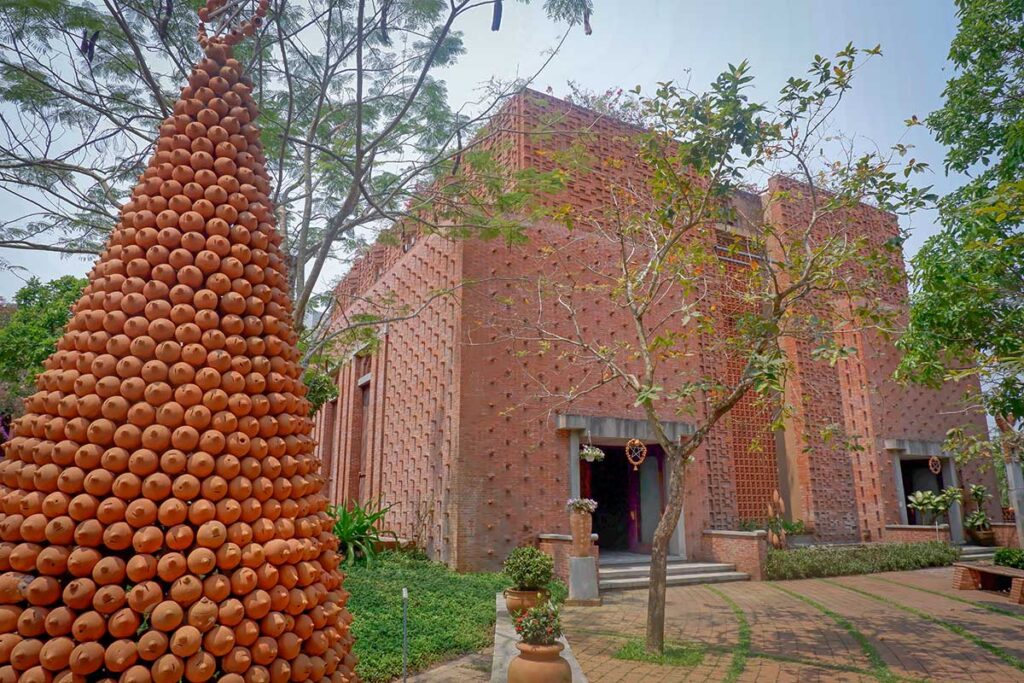
A short walk from the village center, this expansive park and museum covers 6,000 square meters and features everything from traditional pottery to miniature replicas of world landmarks—like the Eiffel Tower and Taj Mahal—crafted entirely from terracotta.
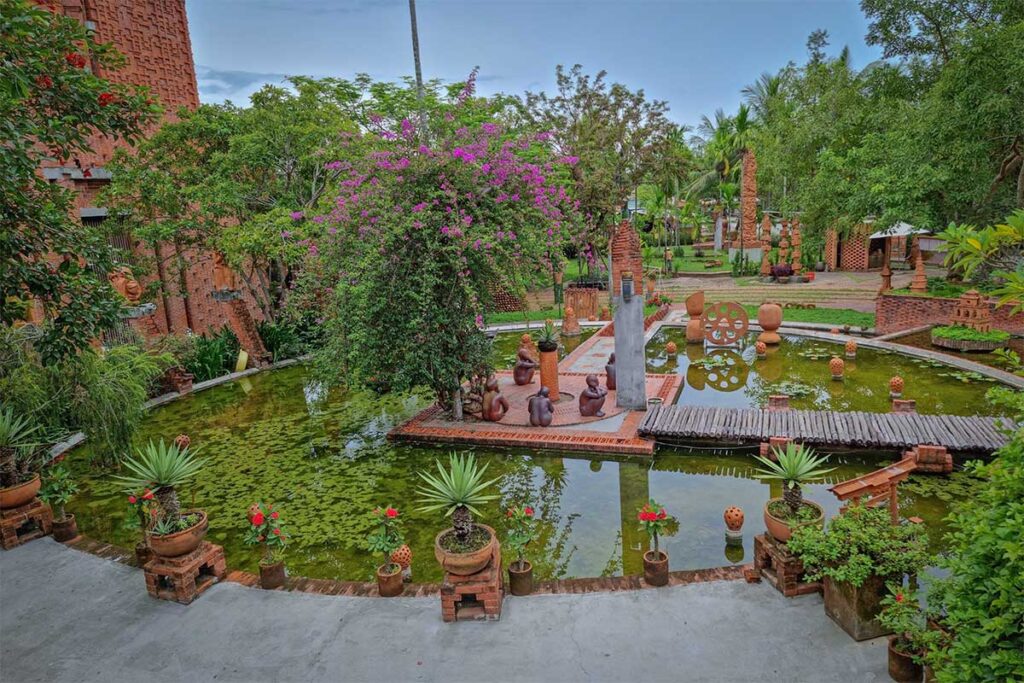
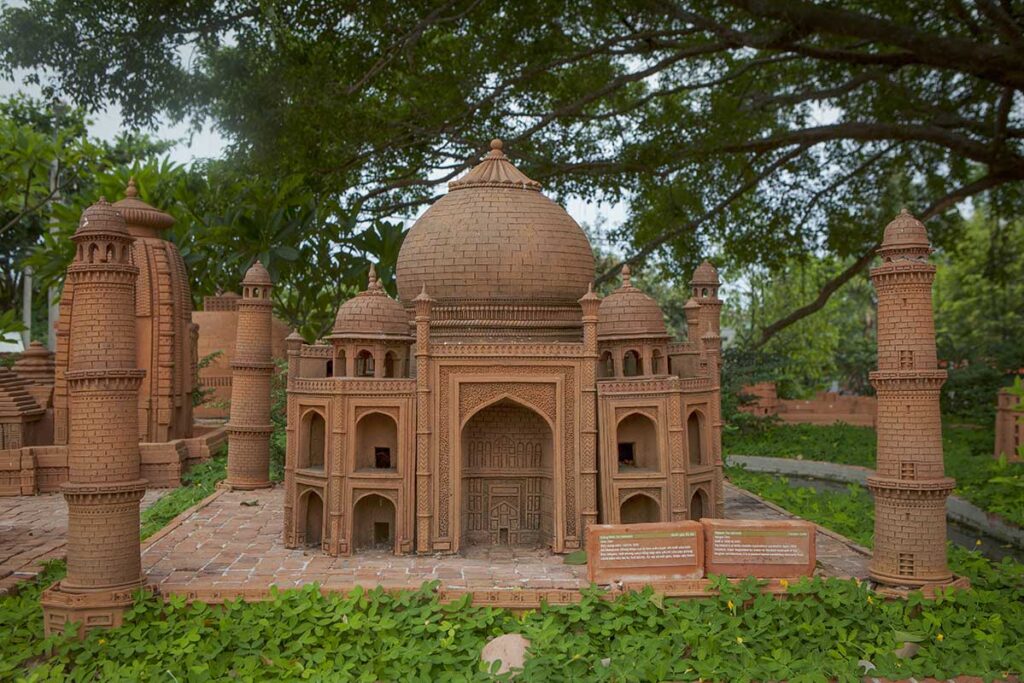
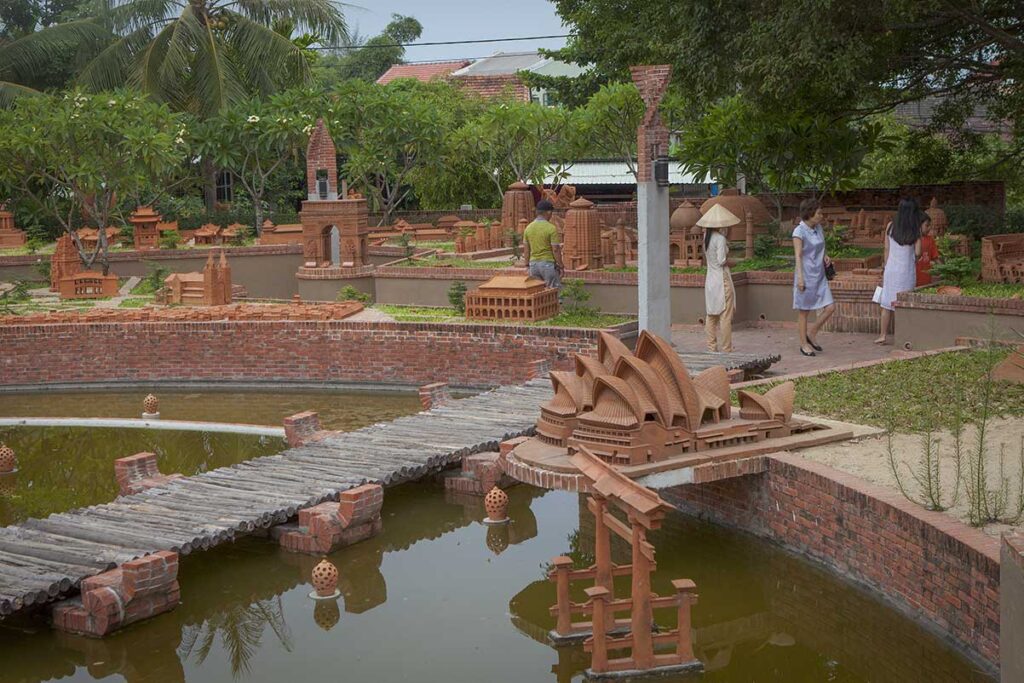
Inside, exhibits explain the history of Vietnamese pottery and different clay traditions across the country. The space is beautifully designed, with a shaded courtyard, gallery, and rooftop views.
4. Shop for local pottery

Shops throughout the village sell a variety of handcrafted items, including vases, teapots, candleholders, clay whistles, and decorative figurines. Prices are generally reasonable, and items are made on-site using local clay. Some pieces are simple terracotta, while others are more ornate with painted details. Buying directly supports the local families who produce them.
5. Cultural sights
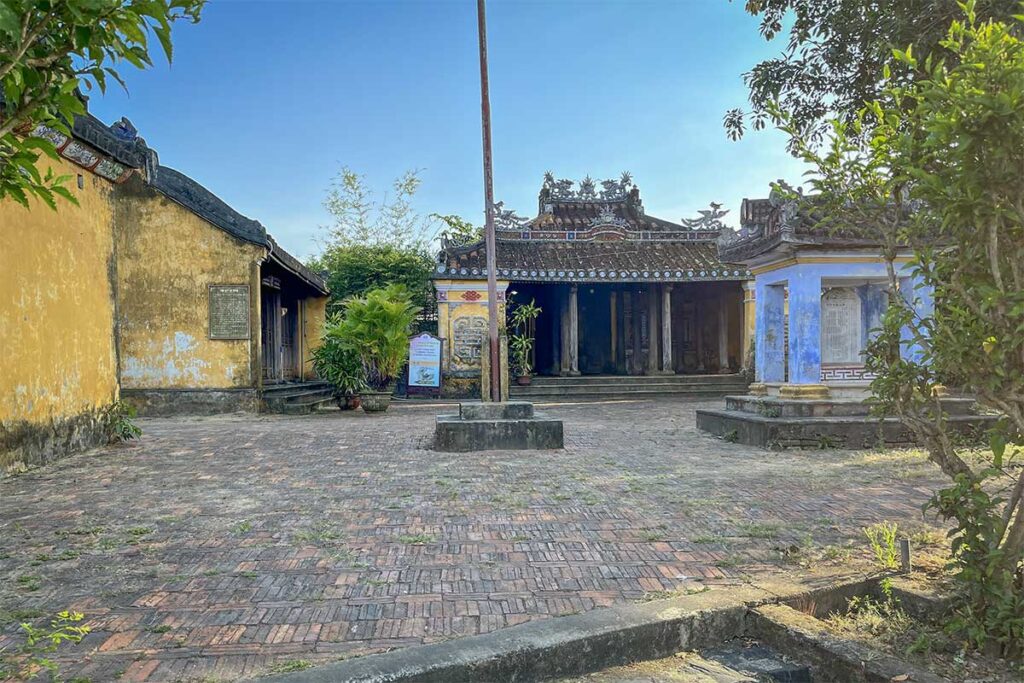
Besides pottery, the village has cultural landmarks like Nam Dieu Temple, where pottery gods are worshipped, and several old communal houses. You’ll also find traditional kilns and symbolic decorations on gates and buildings. If you visit during the first or seventh lunar month, you might witness seasonal ceremonies that celebrate the potters’ craft and honor their ancestors.
The pottery process
Thanh Ha pottery starts with high-adhesive yellow clay, typically sourced from nearby riverbanks. This clay is kneaded several times to remove air bubbles and improve elasticity. Once ready, it’s shaped by hand or on a traditional foot-powered spinning wheel, then left to sun-dry for several hours or days, depending on the weather.
After refining the shape, the piece is fired in a wood-burning kiln, where experienced artisans judge the temperature and timing based on the smoke and color of the pottery — no digital tools involved.
There are two main types of products:
- Functional pottery (like pots, bowls, tiles) — often unglazed or naturally fired with earthy tones.
- Decorative or artistic pieces, which may include animal figurines, sculptural works, or symbolic carvings.
While many homes in the village still use these traditional methods, modern equipment has also been introduced to meet demand. Thanh Ha’s pottery is not only sold in local markets but also distributed throughout Vietnam and exported internationally. This mix of heritage and innovation is what keeps the village’s craft alive and relevant today.
Where it is & Visiting information
Location
Thanh Ha Pottery Village is located in Thanh Ha Ward, about 3 km west of Hoi An Ancient Town. The entrance is on Pham Phan Street, right along the banks of the Thu Bon River.
Opening hours
Open daily from 8:30 AM to 4:30 PM. Last entries typically allowed before 4:00 PM.
Entry fee
- Village ticket: 35,000 VND (adults), 15,000 VND (children)
→ Includes access to workshops, a small pottery souvenir, and entry to Nam Dieu Temple - Terracotta Park (optional): 50,000 VND (adults), 30,000 VND (children)
→ Includes entry to the outdoor sculpture area and museum building
How to get there
Boat trip (Most scenic)

A peaceful 30-minute boat ride from Hoi An’s riverside (near the Central Market) to Thanh Ha. You can arrange at the dock or book in advanced. Great for photos and a relaxing experience — especially in the morning.
Tip: Read more about Thu Bon River boat tours.
Bicycle (Recommended)
Many hotels in Hoi An offer free bikes, and the ride to the village is only about 15–20 minutes along flat, quiet roads. It’s a great way to explore the countryside. You can make a small detour and bike through You can bike back through Cam Kim Island, to see more countryside and areas were most tourists don’t come.
Tip: Take the boat one way with your bike, and cycle back — best of both worlds. Or join a guided cycling tour that includes stops at nearby villages.
Scooter or Motorbike
Fastest and most flexible. Follow Hung Vuong or Duy Tan Street west out of Hoi An. Use Google Maps to find the exact turn-off on Pham Phan Street. Parking is available at the entrance. Rentals cost around 120,000–150,000 VND/day.
Taxi
Convenient for families or if you’re short on time. A taxi from the Old Town costs around 50,000–80,000 VND and takes about 10 minutes. Grab car and bike are both available in Hoi An.
Pro Tip: Included in tours
Thanh Ha Pottery Village is often part of guided tours that include other activities:
- Cycling & Craft Village Tours often combine Thanh Ha with Tra Que Vegetable Village or Kim Bong Carpentry Village.
- Some My Son Sanctuary tours return by boat via the Thu Bon River and include a stop at Thanh Ha or nearby brick-making villages for an added local touch.
Nearby highlight: Thanh Ha Fish Market
Just across the village near Cam Kim Bridge, this early morning market offers a glimpse into the daily routines of local fishermen. From around 5:00 to 7:00 AM, the area comes alive with fresh seafood being unloaded, sorted, and sold — ideal for travelers interested in local life and photography. It’s part of the same Thanh Ha area but feels very different from the pottery village.
Tip: Visit before 7:00 AM to catch the action.
For more details, check out our full guide to the Thanh Ha Fish Market.
Tips for visiting Thanh Ha Pottery Village
Arrive early or late
The village never gets truly crowded, but heat and sun can make midday visits uncomfortable — especially if you plan to bike. Early morning (before 10:00 AM) is ideal for a more relaxed experience and better light for photos.
Wear comfortable shoes
Some streets are uneven, dusty, or wet near pottery workshops. Closed-toe shoes or sturdy sandals are best if you want to explore beyond the main walkway.
Avoid the tourist traps
Not every shop sells locally made ceramics — some mass-produced items are mixed in. Look for workshops where you can actually see the artisans at work. Avoid shops that push hard for a sale or try to charge for things not clearly priced.
Participate in a workshop
A hands-on pottery session is one of the highlights here. It usually costs around 40,000–50,000 VND, and some places include it in the ticket. Be aware: your piece may not be fired or glazed, and some workshops use simple air-dry or ‘air-fryer’ techniques.
Pair with a boat or cycling trip
Combine your visit with a scenic boat ride on the Thu Bon River or a bike tour through the countryside. Many accommodations offer free bikes. You can also bring your bike on the boat one way and ride back, making it a fun loop through local villages.
Check pricing and what’s included
The village entry ticket (35,000 VND) gives access to most areas, but workshops and the Terracotta Park are sometimes extra (20,000–40,000 VND more). Some ticket booths may offer a “free gift,” but manage your expectations — it’s often symbolic.
Avoid parking scams
If you arrive by bike or scooter, be cautious of unofficial “attendants” charging for parking near the entrance. Parking is usually free — just check with the official ticket counter for the designated parking area.
Is Thanh Ha Pottery Village worth visiting?
Yes — if you’re interested in traditional crafts, hands-on activities, or just want to see a different side of Hoi An. The village has real cultural value, with pottery traditions that go back centuries. You’ll see artisans at work and can try pottery-making yourself, which is fun for kids and adults alike.
That said, it is partially set up for tourists — some shops feel a bit commercial, and not everything is made locally. If you go in expecting a working craft village, you might be disappointed. But if you go for a relaxed cultural stop with a bit of history and interaction, it’s absolutely worth your time.
Best for: craft lovers, photographers, families, or travelers looking to do more than just walk the Ancient Town.
Even better when combined with a morning bike ride, a Thu Bon River boat trip, or a visit to the nearby Thanh Ha Fish Market. You can easily turn it into a half-day itinerary outside the usual tourist spots.
